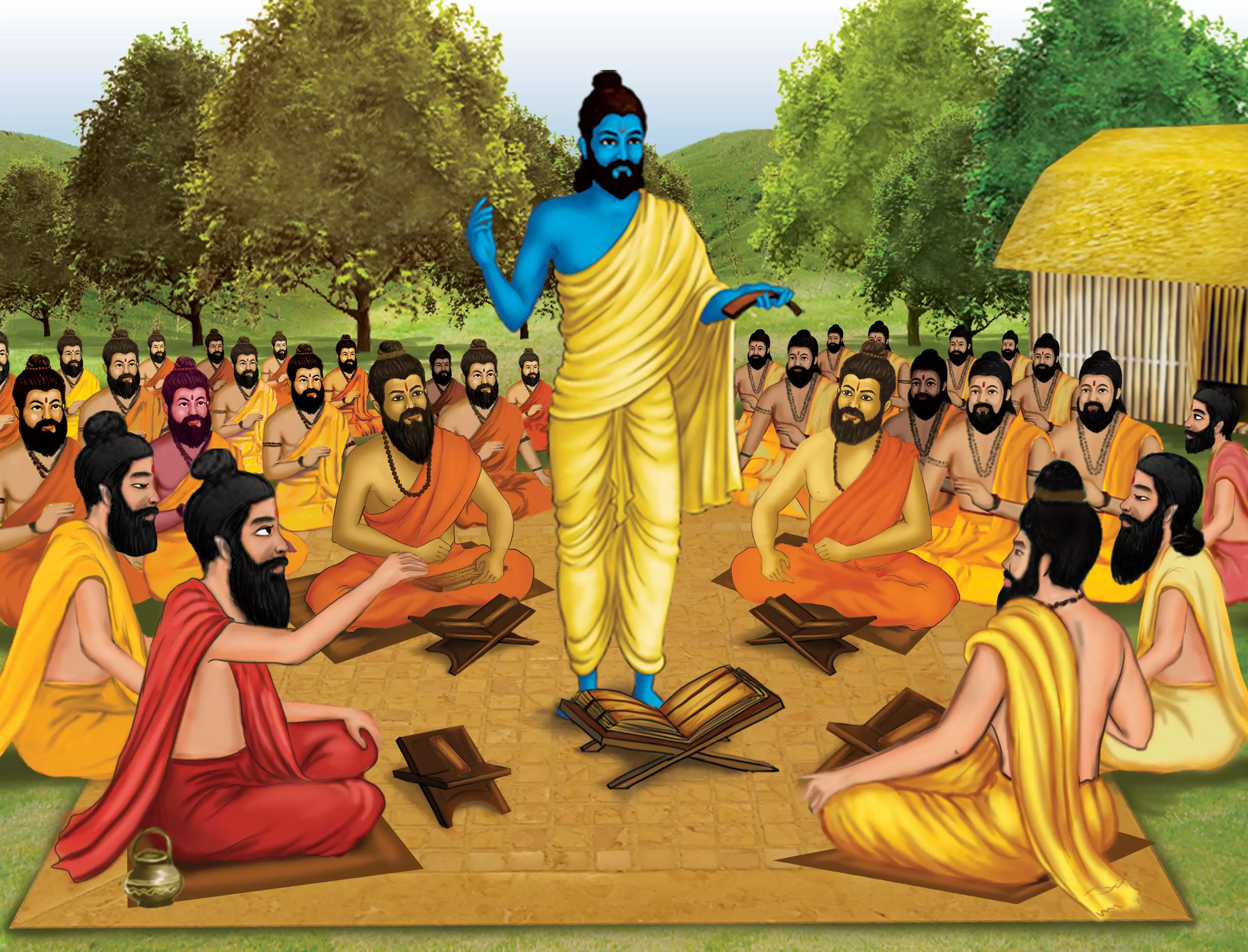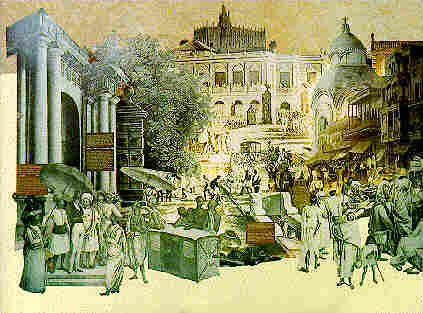HISTORY OF INDIAN EDUCATION-A LOOK INTO OUR SCHOLASTIC PAST
“As the man who digs with a spade (into the ground) obtains water, even so, an obedient student obtains the knowledge which lies hidden in his teacher”.
The above quote from Manu’s Dharmashastra shows one of the few secular, non-casteists, non-sexist, and non-dominant vantages of education as perceived in the ancient Indian society.
In the olden days, there was no system of formal education. A father passed on his wisdom to his child so that he could learn and live on it. With time, we get references to the gurukul system in Upaniṣads, Vedas, and post-Vedic Śāstras. Mostly Brahmanical, our education system comprised Vedas, Upaniṣads, Dharmaśhāstras, Dharmasūtra, and various other Smritis.
To get educated, a child had to leave home and stay with his teacher in a gurukul for the entire duration until the completion of the alma-mater; the teacher took care of everything of his pupils including, food, clothing, shelter, health, etc. Usually, the students were allowed into the gurukul at the request of a preceptor. Then the rite of Upanayana had to be performed before getting into this formal system of education.
The ancient education system was believed to be a holistic one drawing its sources from disciplines ranging from academics like Itihāsa (history), Ānvīkṣikī (logic), Mīmāṃsā (interpretation), Śilpa śāstra (architecture), Arthaśāstra (economics), Varta (agriculture, trade, commerce, animal husbandry), to physical education like Krīḍā (games, recreational activities), Vyayāmaprākara (exercises), Dhanurvidyā (archery) and yogasādhanā (training the mind and body).
They worked together conscientiously to make the pupils proficient in all spheres. Besides, shāstrātha (learned debates) was organised to assess the understanding of the disciples. There also existed peer groups to help each other out, similar to that of modern times. Unlike today, teaching was very much oral, and students memorised and recited what was taught in the class. After completion of primary education, students went to universities and vihāras for higher education. The principal intent was to provide complete learning, helping them lead a disciplined life, and make them realise their inner potential.
Among the most notable universities that came about this time, those at Takshila, Nalanda, Vikramshila, etc. were associated with vihāras. The rest of them like, the ones at Benaras, Navadeep, and Kanchi grew around temples. These universities enrolled foreign-students, which depicts its popularity and importance. They taught almost everything under the sun like politics, the art of warfare, military science, astrology, art apart from the traditional subjects. Their alumnae went into different fields including Pāṇini, author of Aṣṭādhyāyī, Jivāka, a renowned physician, the exalted Chāṇakya Kautilya, etc.
 |
| RUINS OF VIKRAMSHILA UNIVERSITY |
Knowledge was considered being free and, no fee was charged during that time, unlike today’s education-business model. Contribution to education was considered the highest form of donation; therefore, we get references for grants of lands and buildings made by the nobles of society. Maktabas and Madrassas came into play along with the destruction of these bygone universities in the medieval period. It inflicted the most horrific episode of devastation upon the voluminous library of Nalanda, which encased over 9 million invaluable collections of scripts, literary works of eminent scholars collected for over seven centuries. Muhammad bin Bakhtiyar Khilji in 1193 left no opportunity to destroy this noble institution of Nalanda with merciless genocides of thousands of innocent monks and gurus to uproot Hinduism and Buddhist culture and forcibly implant Islam.
 |
| LIBRARY OF NALANDA UNIVERSITY |
With the beginning of British rule, there seemed to be two motives in place. First is to plunder the wealth of this age-old Indian civilization, and second is a white man’s burden of civilising the natives. However, they found that as long as the nation was aware and even proud of its heritage, their ‘white man’s burden’ remained as ‘cumbersome as ever’!
In the Round-table conference of 1931, Mahatma Gandhi, in one of his public discourses, stated, “The beautiful tree of education was cut down by you British. Therefore, today India is far more illiterate than it was 100 years ago.” By 1820, the British had already used up the financial capacity that held up our educational system- destruction that went on for nearly twenty years. But still, the Indians were persistent in continuing with their indigenous education framework.
 |
| MINUTES OF MACAULAY |
Finally, the Britishers invited T.B. Macaulay to decide on the kind and type of education that should be imparted in India. They entrusted him with the responsibility to settle down the dichotomy between Orientalists and Anglicists.
Therefore, he submitted his famous minutes to the council, approved by Lord Bentick, and as a result, they passed a resolution in March 1835. However, in anglicising Indian education, he did away with the Indian values and inculcated English tastes and culture. He continued with downward filtration of the caste system, which gave the upper castes more preference in schools than the lower ones.
The practice of giving more priority to Brahmins in the Govt. and missionary-run schools went on for nearly 100 years. As a result, these castes became impoverished and ignorant and, the Brahmins who were supposed to lead the society could not perceive the societal changes happening around because of foreign education. The missionaries after years of toiling in vain realised that their attempts could bring out the ideals from the Brahmins to a certain extent. However, the conversion was not possible, so they started focussing more on other castes and classes. This vicious cycle led to the targeting of Brahmins for the deplorable condition of the lower order. That, although true, didn’t help the situation.
This poison induced by Macaulay continued to weaken the nation with a perpetual ignorance towards Indian thinking, Indian problems, and Indian models with indigenous solutions to problems. The best brains and the best energies went into western models and solutions which, was essentially materialistic and not at all sustainable. It explains our loss of freedom at the hands of the British that happened because of us losing faith in our way of life, philosophies, principles, thought processes.
And today, we have made a business model out of it, which bankrupts the people who want their kids to get educated and corrupt the young mind. And if we really do not want to exhaust ourselves as a nation, we need to liberate our educational system out of foreign elements and put them up for renewed inquiry before the younger generations so it can continue to be relevant at present as it were in the past.
BIBLIOGRAPHY
1. http://ncert.nic.in/textbook/pdf/heih111.pdf
2. http://home.iitk.ac.in/~hcverma/Article/Article%20by%20IITM%20student%20in%20Indian%20education.pdf
Altekar, Anant Sadashiv. Education in Ancient India. Isha Books, 2009.




Great piece of work. Very well researched . Thanks for throwing light on this .
ReplyDeleteThanks!
DeleteExcellently exposed the British conspiracy against Indian education system. This is why swami Dayanand Saraswati said, ' back to Vedas.'
ReplyDeleteThey took out the Indian from the Indian education system!
DeleteExcellent work.
ReplyDelete